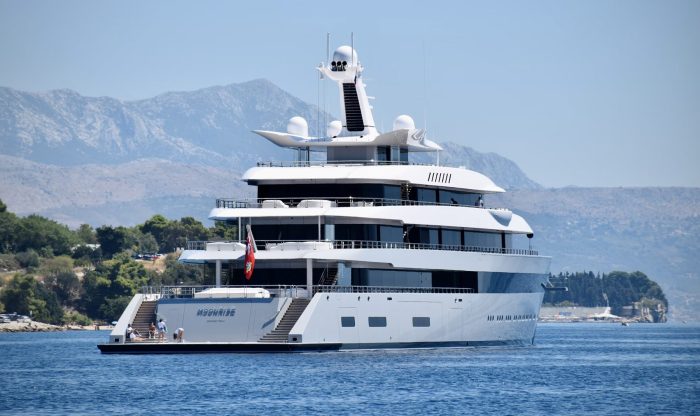Seafarers’ Earnings Deduction is a piece of UK tax legislation that grants seafarers the right to claim 100% tax exemption on all their foreign earnings.
Yes, you read that right – if you qualify for Seafarers’ Earnings Deduction, or SED as it is also known, you don’t have to pay any tax.
Sounds like a sweet deal, doesn’t it? Unfortunately, though, despite the law coming into effect back in 2012, many people still fail to use the exemption, either because they haven’t heard of SED, assume they don’t qualify, or because they are unsure how to go about claiming it.
So, to clear up any confusion once and for all, if you’re a seafarer, read on to discover if you qualify for Seafarers’ Earnings Deduction and find out how to make your claim.
Do I qualify for Seafarers’ Earnings Deduction?
To qualify for Seafarers’ Earnings Deduction, there are several key criteria that you must satisfy:
- You must be an employee onboard a ship
- You must visit at least one foreign port during each employment
- You must establish a qualifying period by spending at least 183 days outside of the UK
- You must be a resident of UK or a European Economic Area (EEA) State
You won’t qualify for the deduction if you:
- Are a crown employee (for example, a Royal Navy sailor or a Border Force Officer)
- Are not a UK resident or a resident of an EEA State
- Have not been away from the UK for long enough
- Break the “half-day” rule or spend more than 183 days in the UK
Now, let’s take a look at each of the qualifying criteria more closely.
1. You must be an employee on board a ship
Although the word ship isn’t officially defined in tax law, to qualify for SED, you need to be employed onboard a vessel such as a Superyacht or a cruise ship.
It’s important to note that offshore installations used in the oil and gas industry are not regarded as ships for the purpose of SED, which means that the following offshore installations don’t qualify for SED:
- Fixed production platforms
- Floating production platforms
- Floating storage units
- Floating production storage and offloading vessels 9FPSOs)
- Mobile offshore drilling units
- Flotels
2. You must visit at least one foreign port during each employment
You can claim SED for 100% of your income from an employment in an eligible period provided that at least one trip either begins or ends in a valid foreign port.
In order to be considered as working wholly or partly outside of the UK, it is generally held that during every tax year, you must complete a voyage or part voyage that begins or ends outside of the UK.
So, in more simple terms, that means you need to complete a voyage to or from a foreign port.
3. You must establish a qualifying period
Now, this part is the trickiest part of the criteria and often the one that people have the most trouble with, thanks to elements such as the half-day rule causing confusion with even the most experienced of seafarers.
However, the good news is that when you break it down, it isn’t as complicated as it first seems.
HMRC uses the term ‘eligible period’ to refer to a period of 365 days or more – which means that you can’t make your first claim until at least 365 days have passed.
Additionally, your eligible period must be made up mainly of days when you are absent from the UK.
The easiest way of achieving this is by spending at least 183 days outside of the UK in a 365-day period. You are considered to be absent from the UK on a particular day if you are outside the UK at midnight at the end of that day. Non-work days spent outside of the UK can also be counted as days of absence.
Don’t worry, though, that doesn’t mean that you can’t return to the UK at all during your qualifying period! It just means that you must meet certain guidelines:
- No single return visit can last for more than 183 consecutive days
- The total number of days you have spent in the UK cannot be more than one half of the total number of days of your total qualifying period abroad. This is known as the ‘half-day rule’.
We know that sounds confusing, but it basically means you must have spent more than half of your time outside the UK since the beginning of your working overseas.
Although confusing, it’s important to abide by the rules because if the half-day rule is broken, at that point your eligible period and ability to claim SED stops and must be restarted.
If you need more information, we explain everything you need to know about the half-day rule in this helpful blog.
4. You must be a resident of UK or the European Economic Area
Finally, to qualify for SED, you must have been resident in the UK or resident for tax purposes in a European Economic Area (EEA) State other than the UK.
If you were a resident in the UK, you’ll need to register for self-assessment and fill in a tax return giving details of your income for the tax year you are claiming SED for.
If you weren’t resident in thew UK but were resident in an EEA State, you can still claim the deduction using a R43M(SED) Repayment Claim Form.
Need further advice about how to claim Seafarers’ Earnings Deduction?
The best way to find out whether you qualify for Seafarer’s Earnings Deduction and to ensure your SED claim is as smooth as possible is by seeking expert help and advice – and that’s where we come in!
Here at Flying Fish, we run a specialist seafarers’ tax service to help. For just £210 a year, we will complete your tax return for you and make sure everything is correct so that your SED claim is approved.
If you’d like to find out more about how we can help, contact our team today or alternatively check out our ultimate guide to all things SED here.






